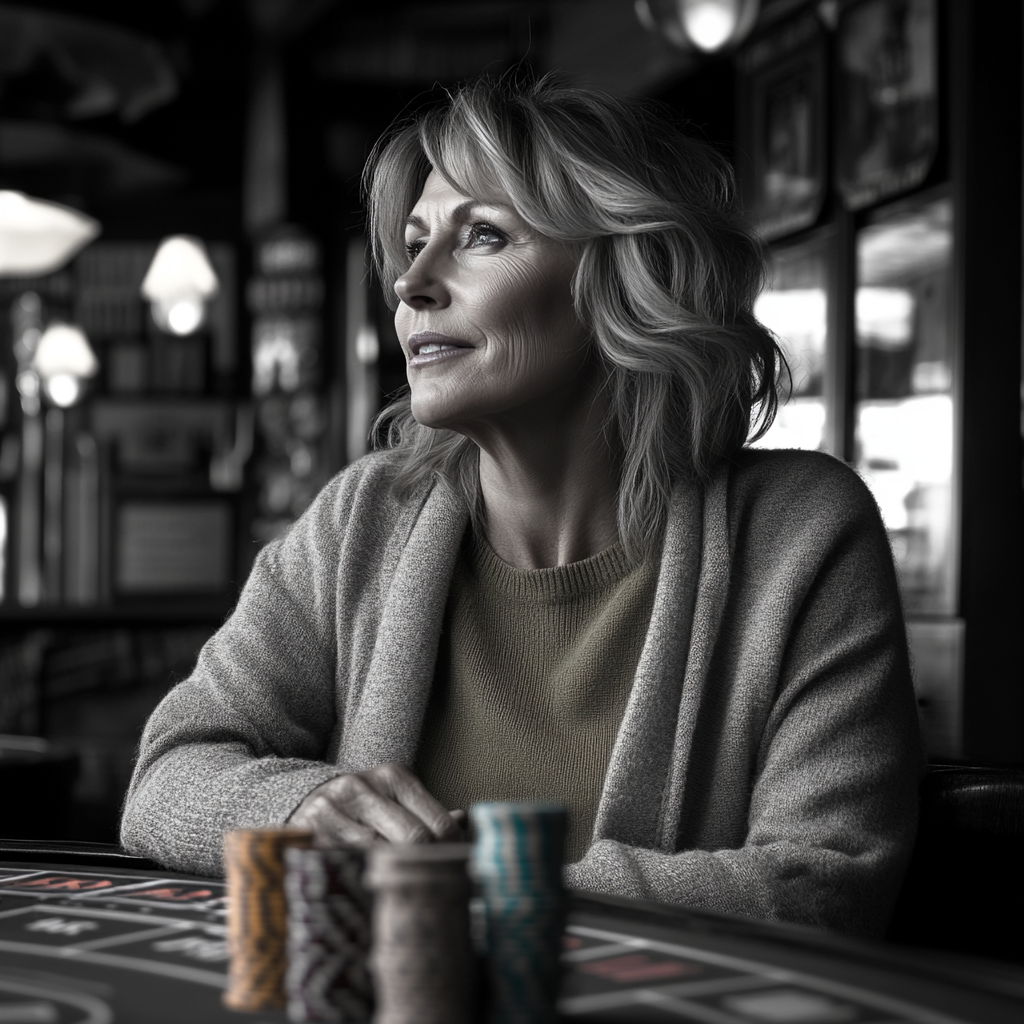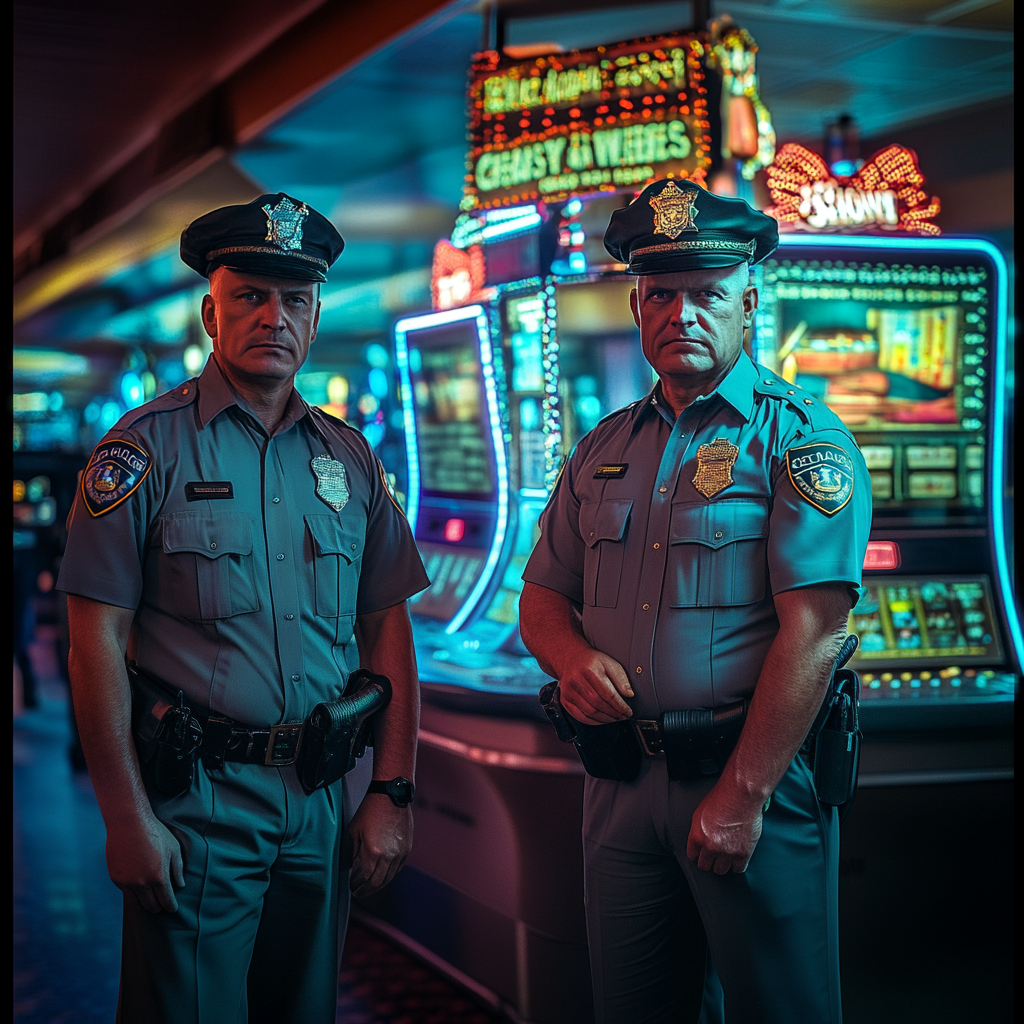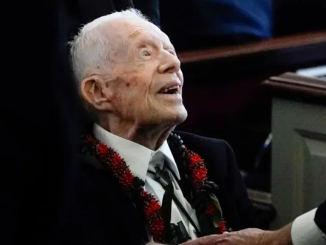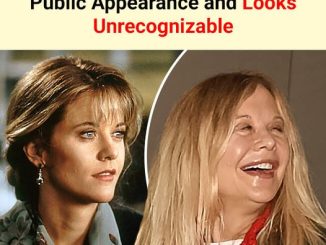The 42nd Academy Awards in 1970 was a night filled with glamor, but one star undoubtedly shone brighter than all the others.
At just 38, Elizabeth Taylor was at the height of her beauty, and her fabulous gown and the world-famous diamond sparkling around her neck made the night special.
However, behind the scenes, a heartbreaking loss threatened to overshadow proceedings…
Looking back at old Oscars ceremonies is like stepping into a time machine that whisks you away to an era filled with glamor and grace. Honestly, the stars of that time had more class in their little fingers than many of today’s so-called celebrities combined.
I can’t help but feel a wave of nostalgia wash over me. It’s bittersweet to gaze upon these iconic figures, so many of whom are no longer with us. To me, it serves as a stark reminder of how fleeting life truly is — a short, beautiful journey we should cherish every moment of.
An historic night
The 1970 Academy Awards was a memorable evening for many reasons, most notably its lack of an official host.
It also marked a groundbreaking moment in Oscars history, as it was the first ceremony broadcast via satellite to an international audience.
One of the night’s most iconic moments was Cary Grant receiving the Academy Honorary Award. The audience erupted into thunderous applause, a heartfelt tribute to his timeless appeal and remarkable legacy in film.

On the other hand, John Wayne’s acceptance speech for Best Actor for his role in True Grit also stole the emotional spotlight. The legendary American icon delivered a humble and gracious speech, showcasing his genuine appreciation for the honor.
Yet, the evening wasn’t without its controversies. Many still debate that the biggest robbery in Oscars history occurred when Dustin Hoffman was overlooked for his breathtaking performance in Midnight Cowboy. Many might argue that John Wayne received the statue for his long and loyal service to the film industry, and perhaps there’s some truth to that as well.
Sinatra saved Cary Grant
Looking back at the archives, it’s clear that Cary Grant played a starring role during the 1970 Oscars. As the legendary actor took the stage to accept the Academy Honorary Award, he naturally expected some applause — a simple courtesy.
When the audience gave him a standing ovation, he was on the verge of tears.
”When everyone stood up, I was all at sea. I thought for a moment I was seeing things. I was so taken aback that I don’t know how I delivered my acceptance speech,” he later recalled.
Grant was on the brink of breaking down, overcome by the emotion of the moment. But just then, he spotted Frank Sinatra in the crowd, his eyes twinkling with a mischievous spark, and that quick glance was all it took to steady him.
”It pulled me together,” Grant said.
Elizabeth Taylor’s entrance
But let’s be honest, the real star of the 1970 Oscars wasn’t Cary Grant, Dustin Hoffman, or even John Wayne. As remarkable as they were, it was a 38-year-old beauty who truly stole the spotlight, captivating everyone at the Dorothy Chandler Pavilion in Los Angeles, California.
When Elizabeth Taylor stepped onto the stage to present the award for Best Picture, her entrance was nothing short of mesmerizing.

Her kindness and generosity contrasted sharply with the cutthroat nature of Hollywood. “Liz Taylor, no one ever as beautiful,” people would say, and it was true.
There was a genuine aura about her that drew people in.
Dressed in a stunning gown that hugged her tiny waist and highlighted her natural beauty — sans the heavy tan that was popular at the time — she left everyone in awe at 42nd Academy Awards.
And with her world-famous 69-carat Cartier diamond sparkling around her neck, it was clear that Elizabeth was not just an actress; she was an icon.
The truth about her diamond
Looking closely at the photos of Taylor from that night, it’s hard not to be captivated by the magnificent jewel around her neck.
Yet, few may know the story behind this iconic piece of jewelry. The Taylor-Burton Diamond, which glittered so beautifully against her skin, wasn’t just a glamorous accessory — it was a symbol of love, determination, and a bit of Hollywood drama.
Just days before April 7, 1970, the date of that year’s Oscars, the press was buzzing with anticipation, speculating on what Elizabeth Taylor would wear to the glamorous event.
Rumors swirled that she planned to dazzle the audience with her million-dollar diamond, newly set in a stunning necklace. For the privilege of showcasing this gem, Taylor reportedly paid a $2,500 insurance premium to three Australian companies — equivalent to about $20,250 today.
This iconic piece, known as the Taylor–Burton Diamond, weighed in at a breathtaking 68 carats and was a gift from her husband, actor Richard Burton.
A raving maniac
The original rough diamond, discovered in 1966 at the Premier Mine in South Africa, weighed 241 carats. Burton acquired the diamond during a visit to London, though not without a fight. Initially, the jeweller manufacturer Cartier had won the diamond at auction for a record-breaking $1,050,000, leaving Burton as the underbidder.
Furious over his loss, Burton turned into a raving maniac.
”I was going to get that diamond if it cost me my life or 2 million dollars, whichever was greater,” he declared.
Elizabeth, however, remained calm.

”Elizabeth was as sweet as only she could be and protested that it didn’t matter, that she didn’t mind if she didn’t have it, that there was much more in life than baubles, that she would manage with what she had,” Burton later wrote in his diary.
The day after the auction, Burton spent hours at a payphone in his London hotel, working with his lawyers to secure the funds to buy the diamond from Cartier — no matter the cost.
Their determination paid off, and the following day, the diamond was officially theirs for $1.1 million.
”I wanted that diamond because it is incomparably lovely … and it should be on the loveliest woman in the world,” Burton later said, cementing this iconic gem’s place in Hollywood history.
Bob Hope joke about Elizabeth Taylor
Comedian Bob Hope led some of the humorous presentation of films and actors nominated for the 42nd Academy Awards, bringing his signature wit to the evening.
As he acknowledged the distinguished guests in attendance, he quipped about Taylor, saying, ”I know Miss Taylor is here. I saw a Brinks truck parked outside.”
Richard Burton couldn’t help but chuckle at the clever nod to his wife’s exquisite collection of jewels.
The truth about her dress
The moment Elizabeth Taylor stepped onto the red carpet at the 1970 Academy Awards, it was as if time stood still.
The first thing that captured attention was the stunning color of her dress: a mesmerizing cornflower blue that danced between violet and lilac hues with every shift in the light — and the hundreds of flashing cameras capturing her every move.
The dress wasn’t just a piece of fabric; it was a masterpiece designed by Edith Head, meant to accentuate every inch of Taylor’s radiance.

For starters, the color choice wasn’t a coincidence. Designed by the iconic Edith Head, the gown’s shade was carefully selected to match Taylor’s own mesmerizing eyes. Taylor herself collaborated with Head, seeking an updated version of the dress she wore in the 1951 film A Place in the Sun.
The gown was more than just a fashion statement; it was a work of art. The plunging neckline perfectly framed the Taylor-Burton diamond, allowing the necklace to shine while accentuating her newly slim figure.
“It is designed to show off Elizabeth’s new, thin figure. It’s a soft, floaty, romantic chiffon. Over it, she has a soft, stole-cape to the floor in chiffon with a hood,” Edith Head told AP.
It was a look that would become etched in Oscars history, forever tied to the elegance and allure of Elizabeth Taylor.
Took a 10 minute bath
On the day of the event, Taylor’s beauty routine was reportedly refreshingly simple.
The celebrated movie star didn’t follow an elaborate skincare regimen; instead, she used a basic drugstore moisturizer.
Although she enjoyed doing her own makeup, she worked with a professional makeup artist for important occasions like the Oscars. Taylor favored a sheer foundation and soft blush, often using cake eyeliner for her eyes. Interestingly, she never wore false lashes, as she was naturally blessed with a double set of lashes.
”Elizabeth took a 10 minute bath at the end of her makeup application, to help set her makeup and relax a bit before the event,” a rep for House of Taylor told AOL.
Cried backstage
The celebrated star, one of the last of classical Hollywood cinema, had an important role during the 1970 Oscars — she was there to present the coveted Best Picture award.
However, chaos reigned behind the scenes.
Moments before her appearance, Richard Burton had just suffered a heartbreaking defeat, losing the Best Actor award to John Wayne. This marked the sixth time Burton had been nominated without clinching the iconic golden statuette, and the news hit Taylor like a thunderclap.

Devastated, she broke down in tears backstage, with witnesses recounting how the makeup artist had to rush to refresh her look before she could take the stage.
When she finally stepped onto the stage, her composure was shaky. You could see it in her eyes. As she appeared, a hush fell over the audience; you could hear a pin drop.
Despite her professionalism, the heaviness of her husband’s loss was clear as she announced the winner for Best Picture.
The man she loved had faced yet another loss, and it weighed heavily on her heart.
After-party
In his diary, Burton captures the essence of that magical night:
“Wednesday 8th: We went to the party afterward and sat with George Cukor, the Pecks, and the Chandlers (owners of the LA Times), but we were surrounded by scores of photographers who, to my delight, paid little attention to anyone else, including the winners. Barbra Streisand, who fancies herself a big star, was completely eclipsed.”
A glance at the countless photographs of Taylor from that unforgettable night makes it abundantly clear — she was the undeniable center of attention.
At the after-party, the actress and her husband was surrounded by a constellation of celebrities. Flashbulbs lit up their table like fireworks.
It was as if the paparazzi were also spellbound, struggling to focus on their task as they recognized the sheer magnitude of the moment. No longer were they mere photographers capturing dreams for glossy magazines; they found themselves entranced by the vision before them.

Many would argue that the greatest star of the 20th century shone brightest on that unforgettable night. On her left ring finger glittered yet another extravagant gift from her husband — the stunning 33.19-carat Krupp diamond ring, capturing the essence of her iconic allure.
So how did this magical night end for Taylor and her entourage?
”We got out with a great difficulty because of the hordes of photographers, visiting Gig Young, who won best supporting actor, en route, who was stoned but sweet. Hawn won the supporting actress, also as predicted. We couldn’t find Duke Wayne so came home, [. . .] Later still came Wayne himself also very drunk but, in his foul-mouthed way very affable,” Burton wrote in his diary.
As the curtains fell on the 1970 Oscars, one thing was abundantly clear: Elizabeth Taylor was the undeniable star of the night. She encapsulated everything that was magical about Hollywood in the 1970s: beauty, talent, and an unyielding spirit that transcended the screen.
Reflecting on her charisma and humility, it feels entirely fitting to celebrate her in this way. She was not just a phenomenal actress but a remarkable human being who captured the hearts of many.
If you agree, please feel free to share this article!
My MIL Left the House Every Thursday & Returned Smelling Terribly — I Went Pale When I Discovered Why

They say you never really know someone until you’ve lived with them. I thought I knew my mother-in-law, but everything changed when I decided to follow her. What I uncovered wasn’t just a secret; it was a ticking time bomb that threatened the peace of our home.
I used to think my life was predictable, with its comforting routine. I worked as a freelance graphic designer, which gave me the flexibility to be home most days while still bringing in a decent income.

A woman working on her laptop from home | Source: Midjourney
Xander, my husband, worked long hours at his law firm, so I often had the house to myself. It was peaceful until my mother-in-law, Cordelia, moved in three months ago.
After her husband passed away, she called us one night, her voice trembling.
“Olive, dear… I don’t know how to do this on my own,” she’d sobbed over the phone. “The house is so empty, so lonely… I just need to be around my family.”

An extremely sad senior woman talking on her phone | Source: Midjourney
I glanced at Xander, and he nodded, looking concerned. We agreed to let Cordelia move in; it felt like the right thing to do for a grieving woman who’d just lost her partner of 40 years. But from the start, something felt off.
Cordelia had always been a little strange, but now her behavior was unpredictable. Every Thursday, she would leave early in the morning and return late in the evening, her clothes carrying a terrible stench: something rotten and damp, like decay. It lingered, clinging to the air and making me question what she was really up to.

A woman looks thoughtful and curious while sitting at home | Source: Midjourney
“Mom, where were you today?” Xander asked her one Thursday evening as she shuffled into the kitchen, her eyes avoiding ours. I stood by the stove, pretending to stir a pot of soup, trying not to wrinkle my nose at the smell.
“Oh, just out with some old friends,” she said, waving a hand dismissively, her smile tight and unconvincing.

A senior woman forces a smile while looking at someone | Source: Midjourney
“Every Thursday?” I asked, keeping my tone casual. “That must be some social circle.”
She glanced at me, her eyes lingering a moment too long, then shrugged. “We like to meet regularly. It’s good for the soul, you know, catching up with old friends.”
But that smell — it was like she’d been crawling through a sewer. The scent lingered long after she’d passed, a pungent blend of garbage and something wet and decayed. I could feel my curiosity gnawing at me, the way you can’t help but poke at a sore tooth.

A curious woman standing in the kitchen and looking at someone | Source: Midjourney
One Wednesday night, I couldn’t take it anymore. “Xander,” I whispered, nudging him awake. “Are you seriously buying that story?”
He blinked sleepily. “What story?”
“Your mom’s ‘out with old friends’ story,” I replied. “Every Thursday? And that smell… it’s not normal.”
He sighed. “Maybe she’s just grieving in her own way, Olive. People cope differently.”
I felt my jaw tighten. “And what way is that? Dumpster diving?”
He chuckled softly, half-asleep, “Let it go, love. It’s probably nothing.”

A man chuckles softly while lying in bed at night | Source: Midjourney
But it didn’t feel like “nothing.” It felt like a secret, and I needed to know.
The next Thursday, I called in sick and decided to follow her. I waited by the window, peeking through the blinds like some kind of amateur detective. Cordelia left the house at her usual time, dressed in her oversized coat, clutching her handbag tightly.
I kept a safe distance as she walked down the street, turning left at the end and then another left into an alley I didn’t even know existed. My heart pounded in my chest as I tailed her.

A woman is out on the street, looking at someone | Source: Midjourney
She stopped at the corner and looked around like she was checking for someone or something.
“Where are you going, Cordelia?” I whispered, more curious than ever.
I was expecting something harmless, maybe even laughable, like an old ladies’ knitting club or maybe a bingo night in a creepy basement. But what I found inside was nothing like that.
Cordelia didn’t meet up with friends. Instead, she made her way through the shadiest part of town, slipping into an old, run-down building that looked like it could collapse at any moment.

A senior woman standing outside an old building | Source: Midjourney
I hesitated outside, the walls covered in graffiti and the windows boarded up, but I took a deep breath and followed her inside. The air was thick with smoke, the kind that sticks to your skin, and the room was filled with the low hum of murmurs and distant laughter.
That’s when I saw it: a hidden, illegal casino tucked away in the back, reeking of stale smoke and the sour smell of desperation. The dimly lit room was filled with flashing lights and the sounds of poker chips clinking filled the air.

Stacks of poker chips on a table | Source: Pexels
And there, in the middle of it all, was my mother-in-law. Not just “hanging out with friends,” but gambling away every penny she could get her hands on, her eyes fixed on the cards in front of her, her hands trembling with each bet she placed.
I stayed in the shadows, barely breathing, watching her play hand after hand. She looked different, haggard, almost like she was wearing the weight of every decision she’d ever made. Her lips were moving, but I couldn’t hear what she was saying over the noise.

A grayscale photo of a senior woman sitting in a casino with gambling chips lying on her table | Source: Midjourney
I saw her lose money, win a little, then lose it all again. She seemed almost possessed, her fingers shaking as she reached for the chips, her face lined with a mixture of desperation and obsession.
I wanted to pull her out of there, to grab her by the arm and drag her home, but I couldn’t move. I felt frozen, glued to the spot. I needed to see how far she would go. She didn’t leave until late in the evening, and when she finally did, she looked exhausted.

A senior woman looks exhausted while sitting in a casino | Source: Midjourney
Her eyes were glazed over, and her shoulders slumped like she was carrying the weight of her losses on her back.
I waited until she turned the corner before I followed, keeping my distance. As we walked back, I felt a wave of anger and pity twisting in my stomach. What had she gotten herself into? And why hadn’t she told us?
The next morning, I couldn’t hold it in any longer. At breakfast, I set my coffee cup down a little too hard. “Cordelia, where were you yesterday?” I asked, my voice sharper than I intended.

A woman looks serious while standing in the kitchen and looking at someone | Source: Midjourney
She barely looked up from her cereal. “With friends, like I told you.”
“Stop lying, Cordelia,” I snapped. “I followed you. I know where you were.”
Her spoon clattered against the bowl, and she went pale. “You… you followed me?”
Xander looked between us, confused. “What’s going on?”
“She wasn’t with friends, Xander,” I said, my gaze fixed on her. “She was at an illegal casino, gambling. And from the looks of it, she’s been doing it for a while.”

A senior woman gambling in a casino | Source: Midjourney
Cordelia’s face crumpled, and she broke down. “I… I’m sorry,” she sobbed. “I’ve lost everything… everything. I had nowhere else to go. That’s why I begged you to let me stay. I was ashamed, and I didn’t know how to tell you…”
Xander’s face turned a deep shade of red. “You mean to tell me you’ve been lying to us this whole time? Using us?”
“I didn’t mean to!” she cried. “I didn’t know how to stop. I thought maybe… maybe I could win it all back.”

A grayscale photo of a senior woman looking sad and desperate | Source: Midjourney
I felt a pang of guilt, but it was overshadowed by the anger boiling inside me. “You’ve been draining us, Cordelia. We took you in because we cared, not so you could feed your addiction.”
She looked at me, her face streaked with tears. “I know, I’m so sorry. I promise I’ll change. Just… don’t throw me out. Please.”
That night, Xander and I lay in bed, unable to sleep. “We have to do something,” I whispered. “We can’t just let her keep doing this.”
Xander sighed deeply. “What do you suggest, Olive? Tough love?”

A man looking at his wife while sitting in bed at night | Source: Midjourney
I nodded. “Exactly. If she’s not going to stop on her own, then we’ll have to make her stop.”
The following Thursday, I handed her a large sum of cash, more than she had seen in one place since she’d moved in with us. Her eyes widened, and for a moment, I saw that familiar spark of greed.
“Go ahead,” I said, forcing a smile. “Take this and do whatever you want with it.”

A woman forcing a smile while looking at someone | Source: Midjourney
She hesitated for just a second before snatching the money and stuffing it into her purse.
“Thank you, Olive,” she murmured, her voice shaking, but she didn’t meet my eyes. And then she was gone, practically running out the door.
Xander stood behind me, his arms crossed. “Are you sure about this?”
“Trust me,” I replied. “She won’t get far.”
Earlier that day, I had made a few calls, and by the time Cordelia reached the casino, the place was swarming with undercover cops. The raid went down right as she was about to hand over the cash.

Two cops standing in a casino | Source: Midjourney
I wasn’t there to see it, but I could imagine the look on her face: shock, maybe a little betrayal, as they caught her red-handed, along with the owners of the illegal casino.
That evening, the phone rang. It was the police. “Mrs. Fields?” the officer said. “We have your mother-in-law in custody.”
“We know,” I replied calmly. “And we’re not bailing her out. You should know she’s been struggling with a gambling addiction. We want her to get help.”

A woman talking on her phone | Source: Midjourney
The officer seemed taken aback but eventually agreed to include our statement in the report. The judge showed no mercy; Cordelia was sentenced to mandatory rehabilitation and a hefty fine.
Months later, when she was released from rehab, Cordelia looked different. She seemed smaller, more fragile. She stood in our doorway, wringing her hands.
“I’m so sorry,” she whispered, her voice raw. “I know I hurt you both, and I’m ready to make it right. I want to rebuild my life.”

A senior woman looks sad and ashamed | Source: Midjourney
Xander and I exchanged a look. He stepped forward, his expression soft but firm.
“We’re willing to give you another chance, Mom,” he said, “but on our terms. We’ve found you a modest apartment nearby. We’ll cover the rent, but only if you keep your word and attend your support group meetings.”
Cordelia nodded eagerly, tears in her eyes. “I will. I swear. Thank you… thank you for giving me a chance.”
As we watched her walk away to her new home, I couldn’t help but feel a flicker of hope mixed with the fear of another betrayal.

A woman looks hopeful and a bit fearful while standing outside her house and looking at something | Source: Midjourney
We’d done all we could, and the rest was up to her. The ball was in her court, and only time would tell if she could truly change.
But when Natasha starts to see a change in Marlene’s behavior, she begins to get worried about the old woman. Eventually, when the truth is revealed, Natasha doesn’t know what to do.

Two women cooking together | Source: Pexels
This work is inspired by real events and people, but it has been fictionalized for creative purposes. Names, characters, and details have been changed to protect privacy and enhance the narrative. Any resemblance to actual persons, living or dead, or actual events is purely coincidental and not intended by the author.
The author and publisher make no claims to the accuracy of events or the portrayal of characters and are not liable for any misinterpretation. This story is provided “as is,” and any opinions expressed are those of the characters and do not reflect the views of the author or publisher.



Leave a Reply